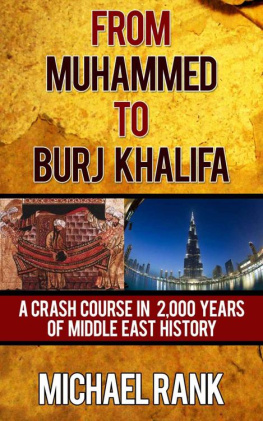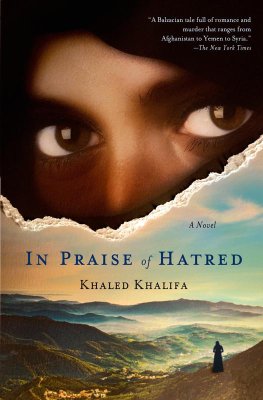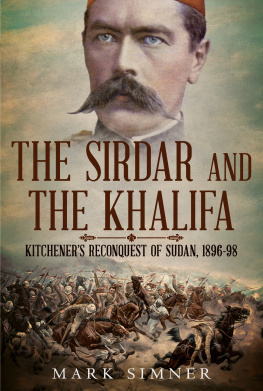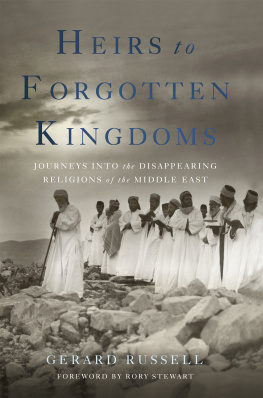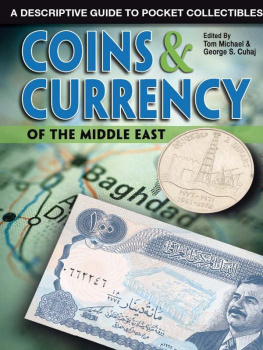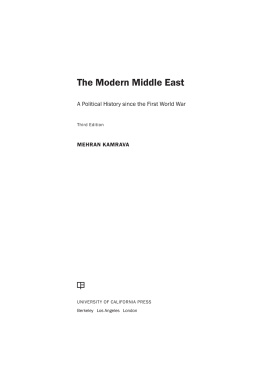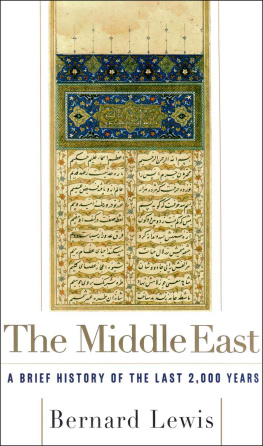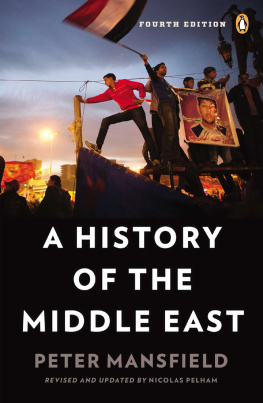Michael Rank - From Muhammed to Burj Khalifa: A Crash Course in 2,000 Years of Middle East History
Here you can read online Michael Rank - From Muhammed to Burj Khalifa: A Crash Course in 2,000 Years of Middle East History full text of the book (entire story) in english for free. Download pdf and epub, get meaning, cover and reviews about this ebook. year: 2013, publisher: Five Minute Books, genre: History. Description of the work, (preface) as well as reviews are available. Best literature library LitArk.com created for fans of good reading and offers a wide selection of genres:
Romance novel
Science fiction
Adventure
Detective
Science
History
Home and family
Prose
Art
Politics
Computer
Non-fiction
Religion
Business
Children
Humor
Choose a favorite category and find really read worthwhile books. Enjoy immersion in the world of imagination, feel the emotions of the characters or learn something new for yourself, make an fascinating discovery.
- Book:From Muhammed to Burj Khalifa: A Crash Course in 2,000 Years of Middle East History
- Author:
- Publisher:Five Minute Books
- Genre:
- Year:2013
- Rating:4 / 5
- Favourites:Add to favourites
- Your mark:
- 80
- 1
- 2
- 3
- 4
- 5
From Muhammed to Burj Khalifa: A Crash Course in 2,000 Years of Middle East History: summary, description and annotation
We offer to read an annotation, description, summary or preface (depends on what the author of the book "From Muhammed to Burj Khalifa: A Crash Course in 2,000 Years of Middle East History" wrote himself). If you haven't found the necessary information about the book — write in the comments, we will try to find it.
Michael Rank: author's other books
Who wrote From Muhammed to Burj Khalifa: A Crash Course in 2,000 Years of Middle East History? Find out the surname, the name of the author of the book and a list of all author's works by series.
From Muhammed to Burj Khalifa: A Crash Course in 2,000 Years of Middle East History — read online for free the complete book (whole text) full work
Below is the text of the book, divided by pages. System saving the place of the last page read, allows you to conveniently read the book "From Muhammed to Burj Khalifa: A Crash Course in 2,000 Years of Middle East History" online for free, without having to search again every time where you left off. Put a bookmark, and you can go to the page where you finished reading at any time.
Font size:
Interval:
Bookmark:
From Muhammad to Burj Khalifa:
A Crash Course in 2,000 Years of Middle East History
By Michael Rank
Digital Edition
Copyright 2012 Michael Rank
All Rights Reserve d
Table of Contents
Free Bonus 'History of Alexander the Great' and 'Mythology Stories' 2-Book Boxed Set
BONUS SAVE 75% ON VIDEO COURSE HISTORY OF THE MIDDLE EAST, 600 A.D. TO TODAY

History of the Middle East includes lifetime access to 75 lectures, over 13 hours of high-quality content, and a community of hundreds of students learning about the Middle East and its social, cultural, military, and religious traditions. I produced and narrated it myself, and it is a heavily expanded version of the material you will read in this book.
Click here to get your discount today.
Best,
Michael
FREE BONUS 'HISTORY OF ALEXANDER THE GREAT' AND 'MYTHOLOGY STORIES' 2-BOOK BOXED SET

If you would like to download the free ebooks History of Alexander the Great and Mythology Stories: Tales from Norse, Old German, Hindu, and Egyptian Mythology, you can get them here by clicking on this link: http://michaelrank.net/freebook
Best,
Michael
For Melissa and Eleanor
This book is intended for those new to Middle East culture and history. It has been written to untangle this information as succinctly as possible and is divided into 25 concise chapters. Each one can be read in about five minutes and is devoted to a major theme in Middle East history, such as the beginning of Islam, the Crusades, Genghis Khan, and the beginning of Israel in 1948. To make each chapter clear and practical, each section begins with two statements: the key idea and why it matters to you.
The purpose of this book is not to provide exhaustive information on all cultures and regions of the Middle East; such a work would be larger than the Encyclopedia Britannica. Instead, it aims to give a simple vignette of each topic, assuming that the reader knows little about them. For those who wish to know more about the topics presented here, they can look at the suggested readings in the back of the book. Those expecting a lengthy discourse of these issues are advised to look at other books, as that is not the author's intent; hence this work being a crash course.
My name is Michael Rank, and in this book I'm going to describe the entire history of the Middle East, from the beginning of civilization to post-Sept. 11. By the end you will know as much about the Middle East as you would after a year-long college course, sound highly knowledgeable about world affairs to your friends and associates, and learn all this in a just a few minutes a day.
To most Westerners the Middle East appears utterly bewildering. Palestinians want to bomb Israelis that force them at gunpoint to live in restricted parts of the country. Arab leaders are furious about this situation and want Israelis 'wiped off the map' and their land given back to Palestinians, even though the real estate of the Holy Land looks something like rural Utah. And nearly all the world's leaders see fit to chime in on this dispute, even though it's over a chunk of land the size of New Jersey.
Most people understand Israel to be the center stage of the Old Testament, and they understand that there is some kind of connection between the Israel of 4,000 years ago and the Israel of today. But whatever the modern country has in common with the ancient nation that lived in a theocratic state and saw its heyday centuries before Hellenic civilization is anyone's guess.
To begin our exploration it is important to understand that in many ways the history of the Middle East isn't that much different from Europe's. Although Middle Easterners share a common culture, they live in countries that are as different from one another as Italy is from Norway. There have been wars fought between these countries that are still a source of bitter disagreement. Many Arabs today resent the fact that they were ruled by the Ottoman Turks for 600 years; Turks also resent the fact that the Arabs abandoned them in the face of the British Army during World War I, resulting in the destruction of their empire.
And even though these countries are majority Muslim, the way that they practice and believe their religion is as different as a British Anglican and a Bulgarian Eastern Orthodox Christian. An orthodox Muslim from Saudi Arabia would barely consider an Iranian Shi'a Muslim to be a believer, and vice versa. As we examine the historical developments that created the modern Middle East, for now it's sufficient to remember that the region is full of diverse groups, as different from one another as that of Europeans.
Let us begin our exploration of the Middle East by starting at the best place that anybody can start: the beginning.
The Beginning of the Middle East
Key idea : The Middle East has been important throughout world history due to its location at the crossroads of Europe, Asia, and Africa . This is the reason that so many empires in ancient history competed for its real estate.
Why this matters to you : After this lesson, you will understand how ownership of key land has been at the center of Middle Eastern conflict from the beginning of civilization to the present day.

As long as we define "Middle East" as a geographical region, the beginning of Middle East history is synonymous with the beginning of civilization. When most Westerners were in social studies class back in high school, they likely learned about a dizzying array of civilizations such as the Hittites, Sumerians, Akkadians, Phoenicians, and Babylonians. It is highly unlikely that the average person knows or remembers much about these empires, unless they studied archeology or were an Age of Empires aficionado. There's no use in pretending a line of cultural or linguistic continuity linked all these different civilizations, so we are not going to try. But before skipping over the ancient past, one thing worth mentioning is that at least one factor did link these civilizations together: They all destroyed a previous inhabitant of the Middle East and were subsequently destroyed themselves.
Why? Because they inhabited some of the best real estate on the planet. While much of the region from North Africa to modern-day Iran is dry and arid, a swath of fruitful land from the Nile River to the Caspian Sea cuts through this region. Known as the Fertile Crescent, it is the convergence point for Eurasia and Afric a for both land and sea. A silk merchant traveling by ship from China to Rome (which could be done even 2,200 years ago) would have to make many stops in the Middle East to stock up on supplies, pay tariffs to local rulers, and secure safe passage over land from the Red Sea to the Mediterranean across Egypt. So if any sort of long-distance trade or military adventures were to take place, it had to involve the Middle East. And if anyone could control this area, then they stood to reap all the profits of these activities, whether through taxing spice merchants or leasing out battle-hardened soldiers to foreign armies.
Long-distance trade first connected the Middle East to the rest of the glob e in 3,000 BC, when routes opened up between the Indus Valley in Pakistan and Mesopotamia. For the next five millennia, the Middle East was the center of global activity, until the discovery of the New World altered the flow of commerce and military activity. It is the value of this real estate that has made the Middle East a dynamic - and highly volatile - place throughout history and up to this day.
Font size:
Interval:
Bookmark:
Similar books «From Muhammed to Burj Khalifa: A Crash Course in 2,000 Years of Middle East History»
Look at similar books to From Muhammed to Burj Khalifa: A Crash Course in 2,000 Years of Middle East History. We have selected literature similar in name and meaning in the hope of providing readers with more options to find new, interesting, not yet read works.
Discussion, reviews of the book From Muhammed to Burj Khalifa: A Crash Course in 2,000 Years of Middle East History and just readers' own opinions. Leave your comments, write what you think about the work, its meaning or the main characters. Specify what exactly you liked and what you didn't like, and why you think so.

